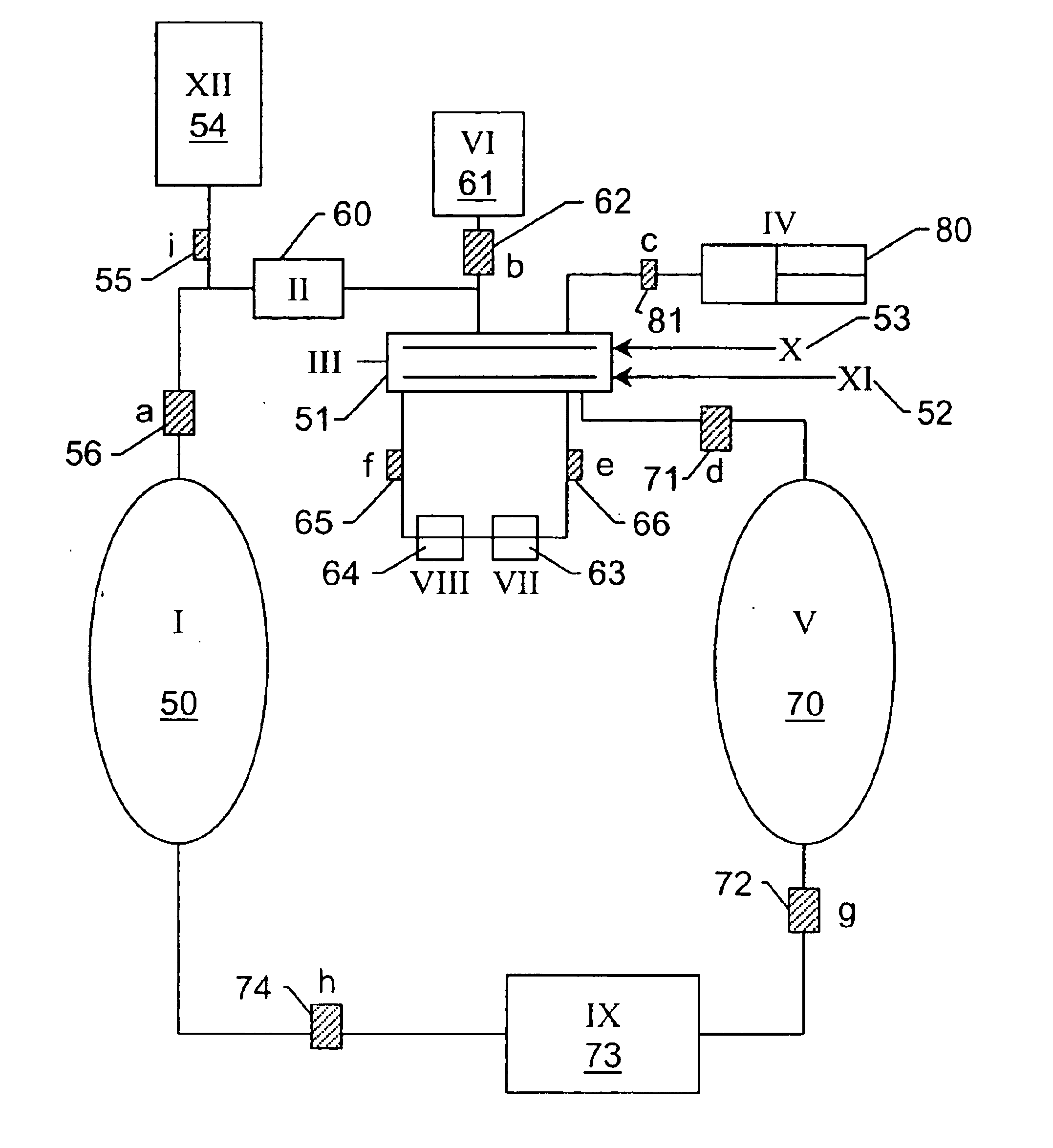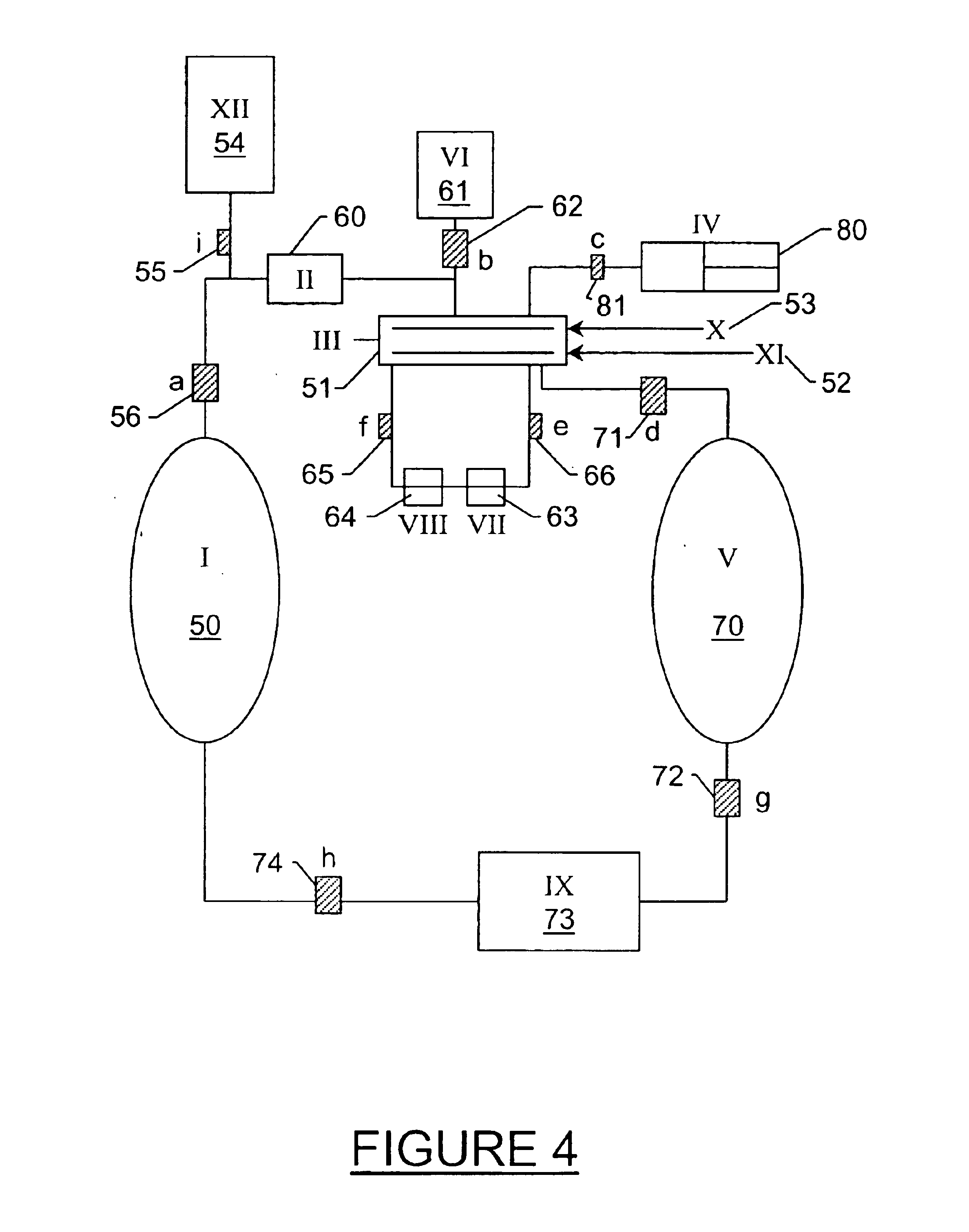Methods for transferring supercritical fluids in microelectronic and other industrial processes
a technology of supercritical fluids and manufacturing processes, applied in the direction of water supply installation, cleaning using liquids, transportation and packaging, etc., can solve the problems of resist deformation and pattern collapse, low water solubility, and difficulty in ensuring the effect of fluid flow
- Summary
- Abstract
- Description
- Claims
- Application Information
AI Technical Summary
Benefits of technology
Problems solved by technology
Method used
Image
Examples
example 1
Treatment of a Coated Wafer with Liquid Carbon Dioxide
[0128]Liquid CO2 was added to a high-pressure vessel that contained a piece of a PHS coated silicon wafer until the wafer was completely submerged in liquid CO2. A mixture that contained liquid CO2 and IPA, 2% IPA by volume, (alternatively any CO2-miscible, hydrophilic solvent, or any hydrophilic / CO2-philic surfactant) was added to the high-pressure vessel that contained the piece of PHS coated silicon wafer submerged in liquid CO2. No damage to the wafer was observed. The system was mixed for 15 minutes. There was still no damage to the wafer. A secondary gas (helium or nitrogen) was added to the top of the high-pressure vessel. The liquid CO2 / IPA mixture was drained under the pressure of the secondary gas to prevent boiling at the liquid / gas / wafer interface. There was no damage to the wafer after the system was drained with a secondary gas. The system was rinsed with pure liquid CO2 and was then drained as mentioned above. Ther...
example 2
Treatment of a Coated Wafer with Liquid Carbon Dioxide
[0129]Liquid CO2 at its saturated vapor pressure was added to a high-pressure vessel that contained a piece of a PHS coated silicon wafer until the wafer was completely submerged in liquid CO2. A mixture that contained liquid CO2 and IPA, 2% IPA by volume, (alternatively any CO2-miscible, hydrophilic solvent, or hydrophilic / CO2-philic surfactant) was added to the high-pressure vessel that contained the piece of PHS coated silicon wafer submerged in liquid CO2. No damage to the wafer was observed. The liquid CO2 mixture was drained from the high-pressure vessel to another high-pressure vessel containing predominantly liquid CO2 at saturated vapor pressure by first opening a valve connecting the vapor side of both vessels then by opening a valve connecting the liquid side of both vessels. The liquid was drained by force of gravity as the first vessel was positioned substantially above the second to allow for complete drainage. No d...
example 3
Treatment of a Coated Wafer with Liquid and Supercritical CO2
[0130]Liquid CO2 was added to a high-pressure vessel that contained a piece of a PHS coated silicon wafer until the wafer was completely submerged in liquid CO2. A mixture that contained liquid CO2 and IPA, 2% IPA by volume, (alternatively any CO2-miscible, hydrophilic solvent or surfactant that increased the carry capacity of CO2 for water) was added to the high-pressure vessel that contained the piece of PHS coated silicon wafer submerged in liquid CO2. No damage to the wafer was observed. After a period of time sufficient to remove the substantial majority of the water from the surface of the wafer, the liquid mixture was diluted with pure liquid CO2 to effect approximately 5 liquid turnovers in the drying chamber. Heat was then added to the liquid CO2 causing a transition to the supercritical phase. The chamber containing the wafer is then drained and vented by maintaining the temperature of fluid and gas above the cr...
PUM
| Property | Measurement | Unit |
|---|---|---|
| Fraction | aaaaa | aaaaa |
| Percent by mass | aaaaa | aaaaa |
| Weight | aaaaa | aaaaa |
Abstract
Description
Claims
Application Information
 Login to View More
Login to View More - R&D
- Intellectual Property
- Life Sciences
- Materials
- Tech Scout
- Unparalleled Data Quality
- Higher Quality Content
- 60% Fewer Hallucinations
Browse by: Latest US Patents, China's latest patents, Technical Efficacy Thesaurus, Application Domain, Technology Topic, Popular Technical Reports.
© 2025 PatSnap. All rights reserved.Legal|Privacy policy|Modern Slavery Act Transparency Statement|Sitemap|About US| Contact US: help@patsnap.com



